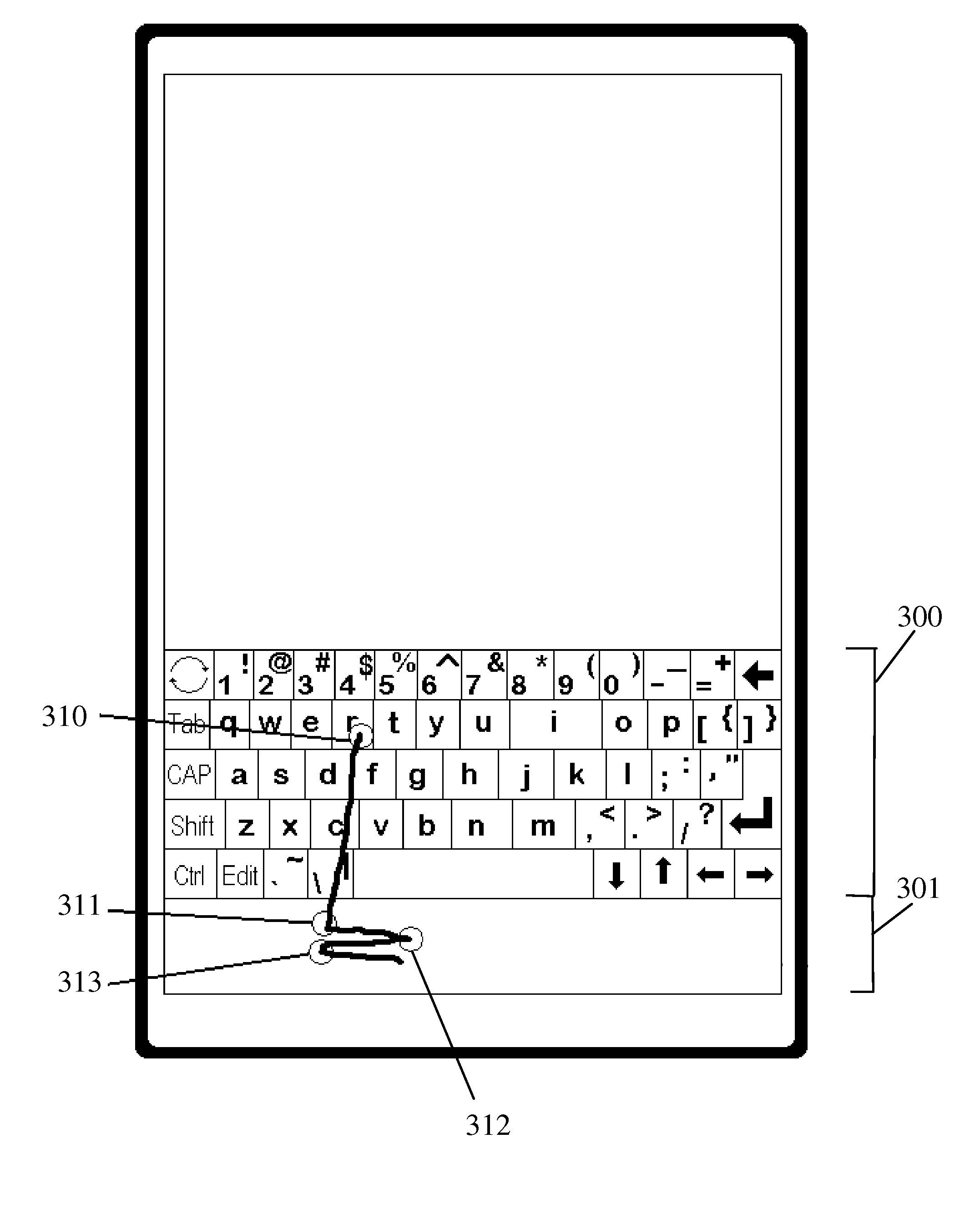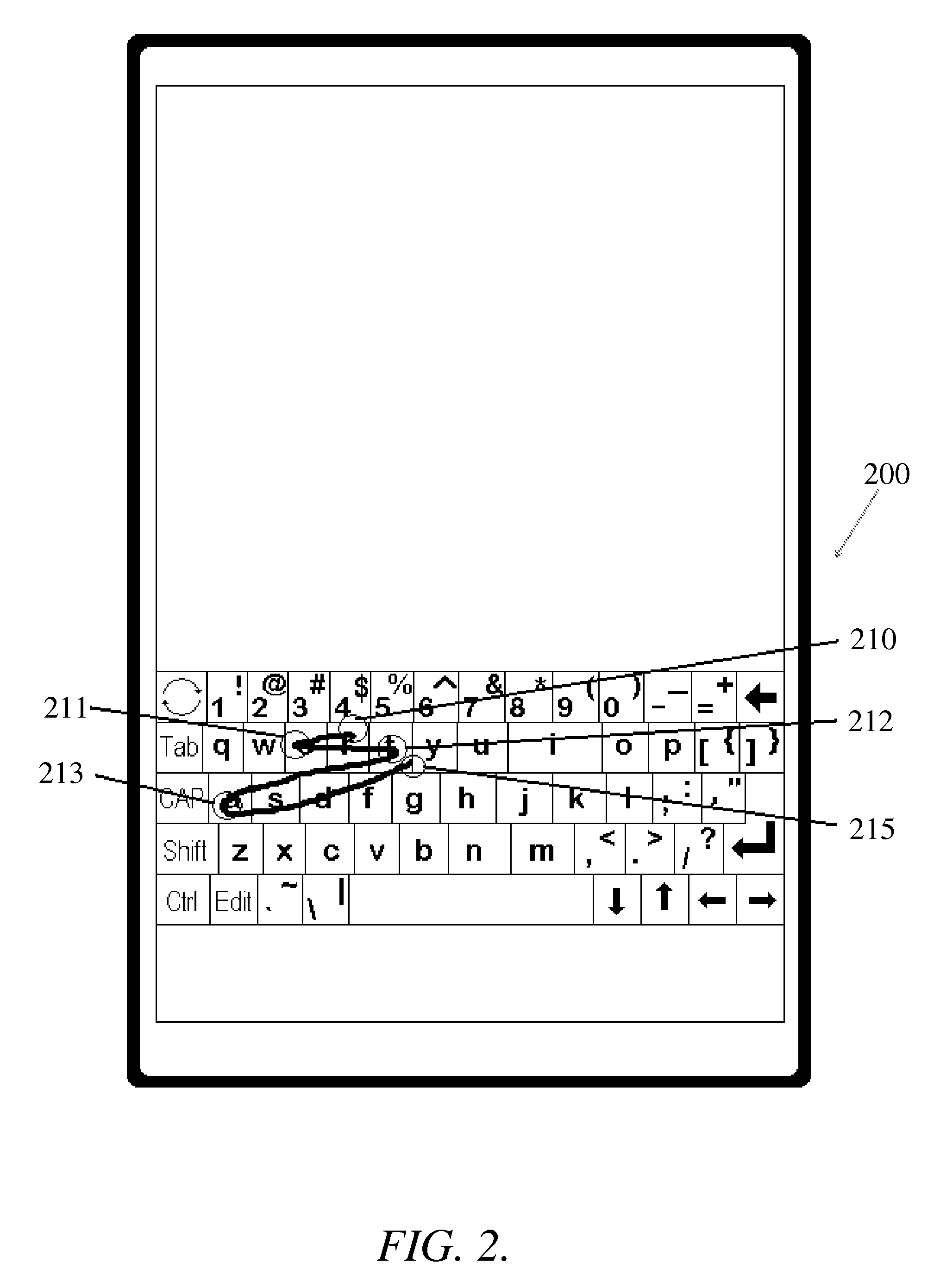Gesture-based repetition of key activations on a virtual keyboard
a virtual keyboard and key activation technology, applied in the field of text input system, can solve the problems of not replacing conventional portable laptop computers, unable to increase speed without adversely affecting accuracy and usability, and the physical keyboard has become one of the most significant limiting factors in just how small a device can become, etc., to achieve the effect of easy and precise control of the number of repetitions, quick repeating any key activation, and easy to repea
- Summary
- Abstract
- Description
- Claims
- Application Information
AI Technical Summary
Benefits of technology
Problems solved by technology
Method used
Image
Examples
Embodiment Construction
[0017]FIG. 1 shows a simplified block diagram of the hardware components of a typical device 100 in which the present invention is implemented. The device 100 includes one or more input devices 120 that provide input to the CPU (processor) 110 notifying it of actions performed by a user, typically mediated by a hardware controller that interprets the raw signals received from the input device and communicates the information to the CPU 110 using a known communication protocol via an available data port. One example of an input device 120 is a touch-screen that provides input to the CPU 110 notifying it of contact events when the touch-screen is touched by a user. Similarly, the CPU 110 communicates with a hardware controller for a display 130 to draw on the display 130. One example of the display 130 is a touch-screen display that provides graphical and textual visual feedback to a user. Optionally, a speaker 140 is also coupled to the CPU 110 so that any appropriate auditory signal...
PUM
 Login to View More
Login to View More Abstract
Description
Claims
Application Information
 Login to View More
Login to View More - R&D
- Intellectual Property
- Life Sciences
- Materials
- Tech Scout
- Unparalleled Data Quality
- Higher Quality Content
- 60% Fewer Hallucinations
Browse by: Latest US Patents, China's latest patents, Technical Efficacy Thesaurus, Application Domain, Technology Topic, Popular Technical Reports.
© 2025 PatSnap. All rights reserved.Legal|Privacy policy|Modern Slavery Act Transparency Statement|Sitemap|About US| Contact US: help@patsnap.com



